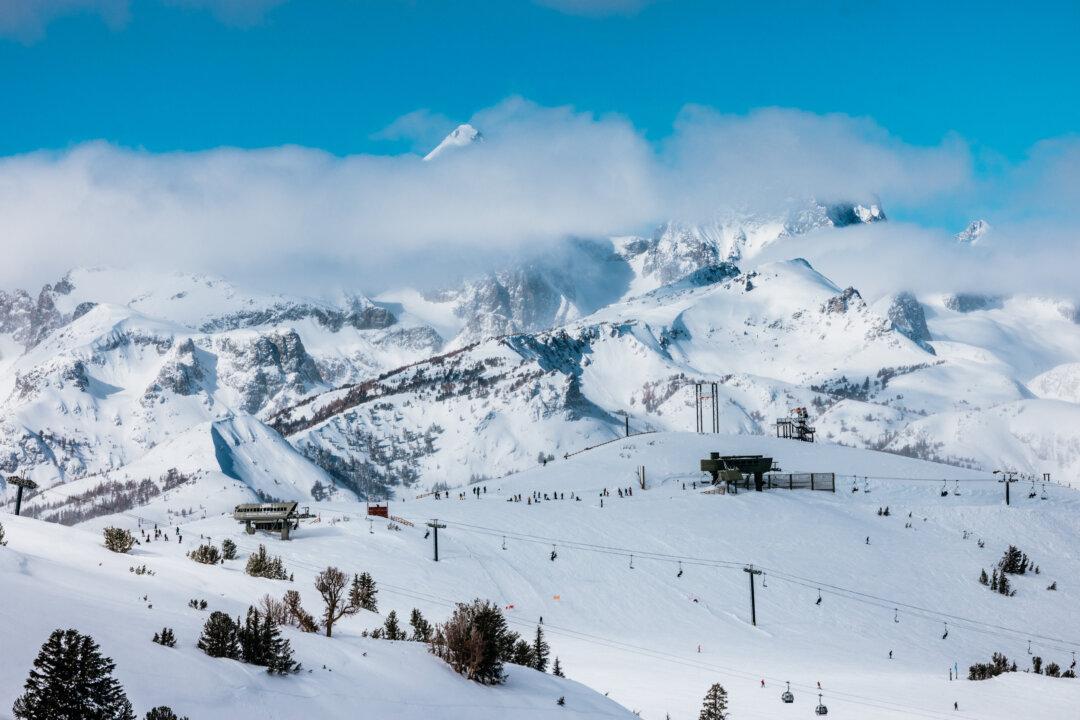With another storm barreling down on California mountains this week, snowfall totals are approaching unprecedented levels in many locations, prompting mountain resorts to extend their ski season—potentially into summer for some.
The Mammoth Mountain resort reported 695 inches of snow on the morning of March 29 in an emailed statement to The Epoch Times, breaking its all-time record of 668 inches reported in winter 2011, after 30 inches of snow fell in the Eastern Sierra overnight.





